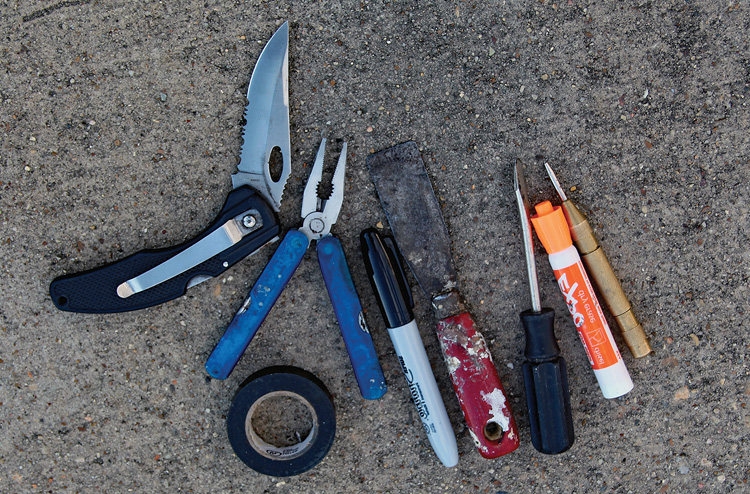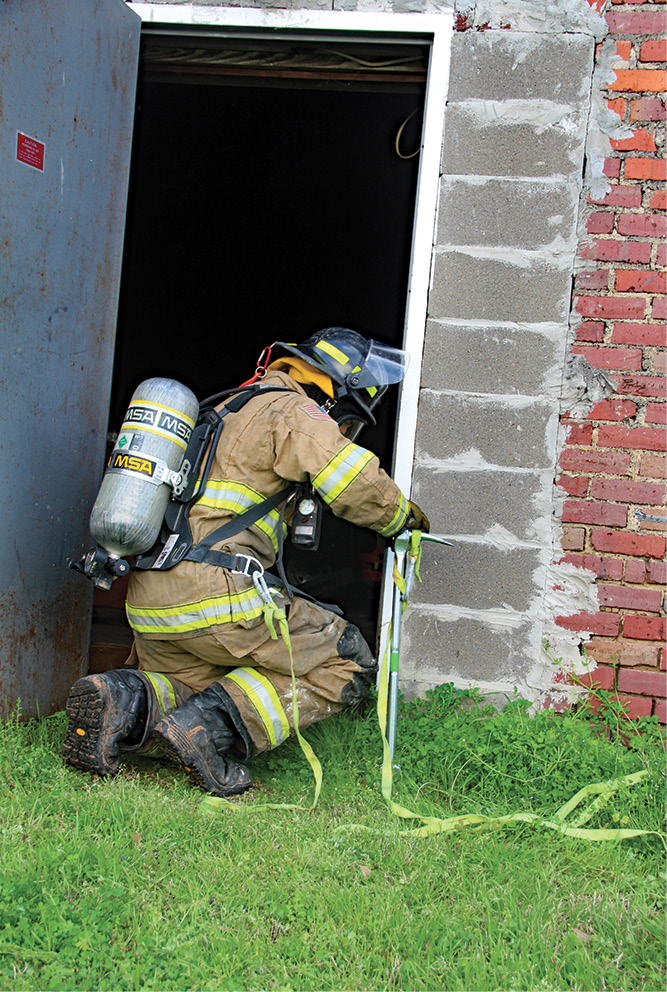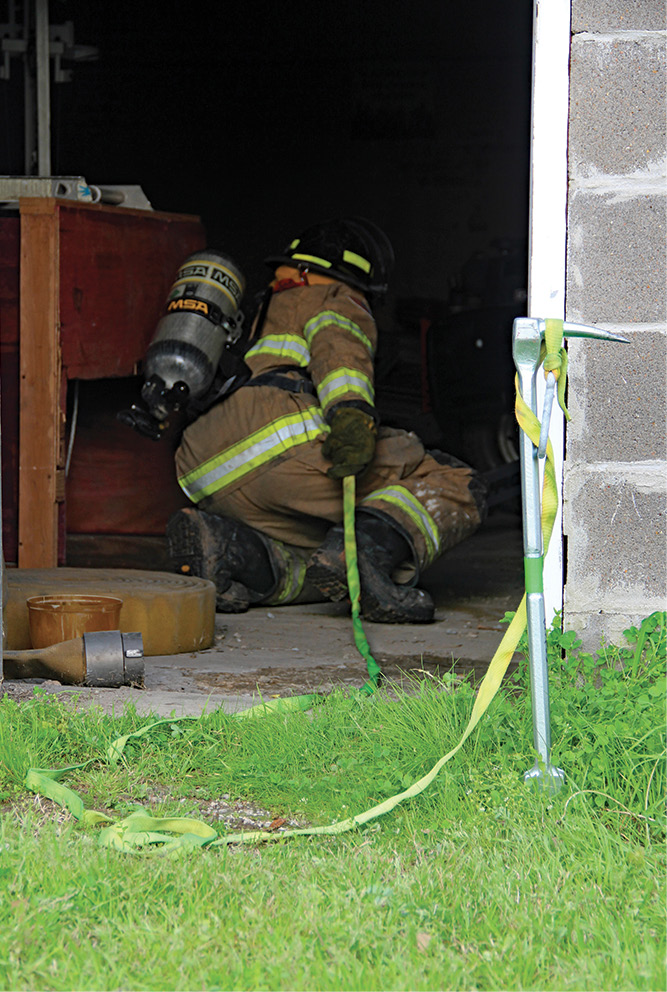
BY ROBERT CALLAHAN
“Why do firefighters wear red suspenders?” As firefighters, we may have used this old joke to open up a children’s fire prevention class or to break the ice when we were delivering a presentation to a community group. We may have even used it as a technique to get the crowd involved at a demonstration at a community event. The answer, of course, is, “To keep our pants from falling down.”
Have you ever asked your fellow members, “Why do firefighters have such big pockets on their pants?” The answer should be clear: “So that we can put tools in them.”
The problem is, there are many firefighters who don’t put a lot of items in their pockets; in many cases, their pockets are empty or have just a pair of gloves in them. There are no tools to help them do their job; to make it easier or more efficient; or, most importantly, to help save their lives or those of other firefighters when things go bad. That is the reality in the area where I work and volunteer.
RELATED
Truck Company Tools Across the Country
Don’t’ Forget About Your Old Tools
And that’s why I developed a class that focuses on why some firefighters don’t carry personal tools, how we can motivate them to carry them, and what tools they should carry.
Culture Plays a Role
The fire service culture in your region, your department, your station, or your shift plays a role in the “empty pockets” issue. It shapes and molds your members’ attitudes and beliefs and the role of the officers and senior members as mentors and leaders in the organization. It has a significant effect, good or bad, on department operations and tactics. The culture may be regional and influenced by the culture of a nearby large urban department, or it may be specific to a particular department. Department leaders must recognize and address these differences.
I was lucky to have served during my formative firefighter years in a series of northeastern volunteer and combination departments where the culture dictated that the company officers and senior firefighters passed down the importance of carrying personal tools in their pockets to the newer members. It was expected that your pockets would be full of the “tools of the trade.” If you were on a run and your task required one of those tools, there would be hell to pay back at the station if it wasn’t in your pocket when it was needed. That essential lesson has stayed with me throughout my almost 40-year fire service career.
I ask chief and company officers, what culture exists in your department regarding personal tools and full pockets, and who is driving your culture?
Why Are the Pockets Empty?
This first question may be the most difficult to answer, but it is the most important. Before we can solve the problem of empty pockets, we need to identify the root cause. Likely, there are many answers; but in my experience, the most common reason was a lack of knowledge about the importance of tools. Without leadership from the senior firefighters, many members aren’t aware of the significance of the tools they should carry. These younger and inexperienced members need guidance in recognizing the value of personal tools.
The inexperienced firefighter may not understand why a slotted screwdriver is important for residential forcible entry or that a piece of webbing has its uses for tasks including search, hoisting, and civilian or firefighter rescue. If the seasoned department members don’t take the time to explain why members should carry these tools, the members may never pick up that critical knowledge. It’s entirely possible that the department’s officers/senior members themselves never learned these critical lessons from their officers/seniors, resulting in a domino effect on critical baseline department-level knowledge.
But with today’s access to the Internet, the information regarding the need for full pockets may be only a few Google searches away. Whether it’s chatrooms, forums, Webcasts, podcasts, online articles, or training videos, the educational resources for those who want to know what they should place in their pockets exist. Although Internet information does not completely replace the invaluable local knowledge of the experienced old-timers, it’s a start.
Possibly senior officers taught the younger, inexperienced members, but the members did not heed them. The reason could be anything from financial choices—sexy light bars vs. boring tools—to an attitude that discounts the wisdom of the senior coworkers. Such an attitude not only ignores the lessons of the past but also starts a dangerous cycle in which the company officers’/senior members’ role becomes discounted over time. New members must learn from the past, and the senior members must carry the past into the present.
Another reason could be the “silent killer” in the fire service—complacency. Although applicable to most of the tools I will discuss later, it is especially relevant in regard to lifesaving tools that we all should carry—wire snips, backup flashlights, and webbing. Most firefighters believe that they will never get into a situation where they will have to use these tools to save their lives or the lives of other firefighters. Thus, they choose not to carry and train on them. Again, it is the role of the company officers and senior members to instill the need for these tools to be present and ready for use.
Filling Up the Pockets
The most basic solution is for a department to issue an essential set of tools that members should carry. Although it sounds simple, it may be a financial challenge for some departments: High-quality wire snips cost $25; webbing, $10; a small backup flashlight, $15; and two or three wedges, $15. Although some departments could easily absorb this cost, many small departments will not find the $65-per-member cost a fiscal reality (photo 1). Possibly, the department could purchase one, maybe two, of the most critical items, but it would not totally solve the problem. Are these tools the member’s property or the department’s? Who is responsible for the cost of repair or replacement?
The department could also make the most critical tools rewards for special recognition, training, fund-raising, working nights, or call attendance. This may be most applicable to the higher-dollar items such as high-quality wire snips and flashlights. Although not as sexy as T-shirts, these items may motivate members to attend more frequently while putting “the tools of the trade” in their pockets.
Motivating Members
How do we motivate the members to spend their own money to fill their turnout pockets if the department can’t purchase the tools? At the most basic level, the officers and senior members must demonstrate why the items are needed. As in training skills, we must make these tools relevant. An easy way to do this is to design training evolutions/scenarios that include the most commonly used tools as part of the evolution or the solution to a simulated emergency.
For example, during a smoke evolution, take the flashlight out of the truck company’s hands to simulate battery failure; what do they do now? Entangle them in wires during a search evolution to impress on them the value of carrying snips in their pockets. Demonstrate the value of webbing when they need to hoist a tool to the roof or to conduct a targeted limited-area search. Allowing them to see the tools’ value during operations goes a long way to getting them to purchase the equipment and putting it in their pockets.

(1) Photos by Dawn Young.
A less dramatic method is to spend a training night or company-level training session talking about the tools and why they are needed. Although not as effective as hands-on lessons, it will still work for some members and may motivate them to purchase a tool or two.
Again, it’s the role of the company officers/senior members to train the firefighters on the importance of pocket tools. Some may need to be educated themselves if they never were mentored as they were coming up through the ranks. The best-case scenario would be to have a few senior firefighters or officers in-house to provide leadership and guide training. If that is not possible, bring in outside personnel or provide training through an Internet resource.
It’s also important to stress to your members if finances are a barrier that some of these items are available for free or at very little cost. For example, firefighters can go to the local auto junkyard and snip a few seat belts at little or no cost to provide themselves webbing that is adequate for most jobs. They could stop by a construction site and ask for a few pieces of wood and, with the help of a saw, they will have a pocket full of wedges. Some tools, such as the slotted screwdriver, would cost only a dollar or two.
To reduce the cost to firefighters, the department may be able to negotiate bulk purchases of some of the tools through local hardware stores; possibly community service organizations may fund the purchase of some items to enhance firefighter safety.
Which Tools?
Which tools to carry will vary widely and depend on your apparatus assignment or daily riding assignment, community demographics, typical building size, and occupancies and construction in your response area. Also consult with your company officers and senior members. Many of the tools I carry in my pockets in fairly rural Bossier and Webster parishes, Louisiana, are not the same tools that I carried in high-density suburban Colchester, Vermont, or in my primarily residential suburban department outside of Albany, New York. They also may not be the same tools you would need to carry in New Jersey, California, Texas, or Wyoming.
The four basic personal tools that should be found in the pockets of every single structural firefighter are below.
Personal Backup Flashlight
It is critical that every member carry his own personal flashlight. Although this should not be the primary flashlight the member or the crew will carry because it will likely be less powerful than the flashlights carried on the apparatus, it should be in the pocket or strapped to every member’s helmet. Why? If the truck’s flashlight is damaged, the battery dies, or the light becomes lost or separated from the crew, each member will now have a secondary light for operations or emergency egress. A backup light is critical for firefighter safety.
High-Quality Wire Snips
The critical words here are “high quality” since low-quality snips have proven ineffective on many of the things that may entangle firefighters. If, as a structural firefighter, you have commercial buildings including retail, office, and fast-food occupancies in your district, you run the risk of becoming entangled during ceiling collapses; these areas contain many miles of overhead electrical and communication wiring and metal cabling found in heating, ventilation, and air-conditioning (HVAC) ductwork. Without a pair of high-quality snips that can cut through the metal wiring found in commercial HVAC ductwork, your chances of disentanglement plummet. In the line-of-duty death incident in a Houston, Texas, McDonald’s that killed two firefighters, field testing showed that inexpensive snips failed. They likely will break before you are able to free yourself.1
Webbing
Of all of the tools mentioned above, the type and configuration of the webbing needed in your pockets have the greatest variations. The primary consideration when it comes to length and configuration is how you plan to use the webbing. Is it going to be primarily for civilian rescue? Firefighter rescue? Anchored search operations? Hoisting?
If the primary use will be for civilian rescue, likely a 10-foot section with a water knot would be the best choice. If the primary use will be hoisting tools, the typical lift length in your district would be the best choice with a carabiner on one end for rapid attachment of the saw, tool, or nozzle to be hoisted. If the most likely use will be for an anchored search operation from a door or a window, a 20- or 25-foot section with a carabiner on both ends that can quickly be attached to the member doing the interior search and the exterior anchor member might be the best option.
You can use this arrangement if a member will be entering the structure through a window or a door without an exterior partner. You can thrust a halligan, a New York roof hook, or a similar tool with the webbing attached to it into the exterior wall or the ground as an anchor. This may not be the best-case scenario, but it may be required in some limited-staffing situations (photos 2-3).
In some cases, an unconfigured piece may be the best choice; it can be configured to the need that arises, or you may carry two or three pieces of webbing of varying lengths chosen for specific applications. Certainly, the experience of your company officers will be the best guide when it comes to purchasing and configuring webbing.


Wedges
The wedges should be of varying sizes. I won’t get into the wood vs. plastic debate; each type has its advantages and disadvantages.
In the new era of hydrocarbon-fed fires, we are far less likely to chock doors open than we did even 20 years ago. In some circumstances, especially when operating with limited staffing, you may need a wedge to control the door in the open or closed position. Not having that ability when you need it may create significant problems, some of which could lead to firefighter injury or death.
In addition to chocking doors, you can use wedges during forcible entry and vehicle extrication operations to maintain purchase points as you reposition or switch tools or temporarily chock open sprinkler heads. Likely, an experienced truckie could rattle off half a dozen additional uses for something so small and unassuming.
Everything Else
Once you have loaded each of the four essentials, the sky is the limit as to what else you may stick in your pocket. Putting too many tools in your pockets will add significant weight and reduce mobility, increase your firefighter profile, and increase fatigue. Your officers/senior members can tell you which tools are the most critical in your operational setting.
My choices include a multipurpose pocket tool, a folding knife, emergency medical services shears, a center punch, a slotted screwdriver, and a small roll of electrical tape for taping over sharp metal during vehicle extrications. Since I may also be assigned as the pump operator, I carry also a grease pencil or erasable marker for marking gauges and a compact flow chart. Other tools my fellow firefighters carry include various types of multipurpose tools, nails, permanent markers, through-the-lock tools, small pry bars, locking pliers, and folding spanners. As noted, much of what you need to carry depends on your area and your department’s operations (photo 4).

We should go to work (volunteer or career) with the tools needed to accomplish the tasks assigned—including tools often not found on the truck. As professionals, we are responsible to see that we have what we need in our pockets to do our job.
Reference
1. The National Institute for Occupational Safety and Health (NIOSH). “Restaurant Fire Claims the Life of Two Career Fire Fighters–Texas.” (February 7, 2001) Fire Fighter Fatality Investigation and Prevention F2000-13. https://bit.ly/2HO0iYn.
ROBERT CALLAHAN is a captain/fire prevention officer with Bossier Parish Fire District 1 in Haughton, Louisiana. He is a captain and the training officer for Webster Parish Fire District 7 and is assistant chief of Webster Fire District 3. He is a contract instructor for the National Fire Academy and an adjunct instructor for Louisiana State University Fire Training. He is the trustee of education for the Brothers of the Boot F.O.O.L.S.

